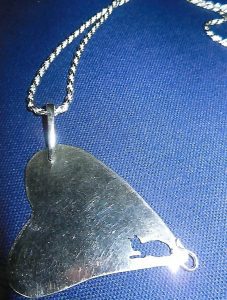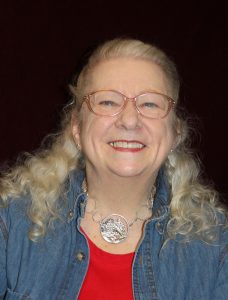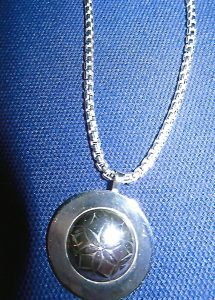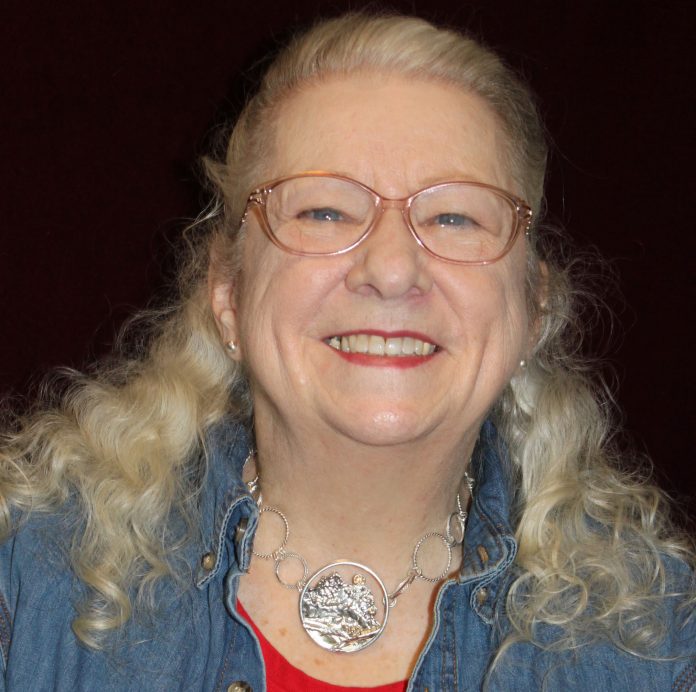Ann Rawls is distinct in the definition of her job. “I am not a lapidarist,” Ann said. “I am a silversmith.”
What’s the difference between the two terms? A lapidarist cuts and buffs colored stones. A silversmith uses minerals such as silver and gold to make jewelry, including stone setting methods.
And how did Ann Rawls get involved in teaching jewelry classes at Centralia College at the age of 74? It’s a simple story.
Ann was born in Milwaukie, Wisconsin, to a mother who was interested in geology. Their interest began to deepen when the family moved to Gresham, Oregon and then to Black Hills, South Dakota, where agates and gold nuggets are literally lying on the ground.

But it was always jewelry, not the stones, that fascinated Ann.
The 1980s were a prime time for buying and selling Black Hills gold jewelry. There were five factories in Rapid City and more in the area where Ann lived for 23 years.
“After applying for on-the-job training and beginning to learn, I was assigned to size rings for the gift store,“ Ann said. “It was a very busy shop which gave me many hours of experience.
She worked as a ring sizing goldsmith along with other soldering assignments. There was always a crush of tourists during the summer months, which determined which job Ann did that day.
“The gift shop was open nights and weekends,” she said. “I was one of several goldsmiths who worked those hours. At first, I really didn’t know what I was doing, but I tried to do my best. It wasn’t until I lived in South Dakota that I realized I wanted to know more about making jewelry.”
At the end of that first hectic summer, Ann asked if she could learn how to set stone. She was given the job plus training and managing the crew that worked at night.
“Everyone else would finish their day job at five, and I would go to work with this crew that worked eight hours every night,” Ann said.

The work was something Ann truly enjoyed. “I remember feeling so very satisfied with both soldering and stone setting as I worked with both precious metal and precious stones,” she said. “I was part of producing something beautiful.”
After years of living on the other side of the country from their hometowns in Oregon, Stewart, Ann’s husband and a pilot, found a beautiful home between the two major airports in Oregon and Seattle. On a clear day, you can see three volcanoes on the Eastern horizon — Mt. Rainer, Mt. St. Helens and Mt. Adams.
It was almost perfect. Stewart had his airplanes, garden, and fruit trees, but Ann had no contact with other lapidaries.
Then one day, while scanning the Centralia College Continuing Education pamphlet, she found a listing for a silversmithing class taught by Russ Lunders, an industrial arts teacher from a local high school.
“During the next ten years of his tutelage, I was able to make my own jewelry designs in silver,” Ann said. Then Lunders decided to retire.
The transition to another teacher was a natural one. Ann applied for the job, and she was hired.
Advancement from beginning to intermediate to advanced classes is sometimes difficult when students have different starting points. Right now, beginning and intermediate classes have finished their projects, so everyone is in an intermediate course. Ann teaches silver and inlaid techniques, how to make a hinge, and how to do pearl fittings.

COVID-19 also affected class enrollment. Face masks, distance from each other, no food sharing, and other restrictions help keep the doors open in the massive shop on campus. Up to 14 students come back each year because they like the class so much. Three-hour classes are offered morning and night.
Beginning students are now intermediate students. “I want them to come back because they have a new technique to learn, give them a new idea, or a how-to-technique,” she says. “I just give students interesting information.”
Devoted students come back each quarter to learn more. After five years of teaching, Ann’s classes are a hit. She will be teaching three Monday classes with the possibility of a beginner class for anyone desiring to learn the art form.
To learn more about Continuing Education courses and Ann’s classes, look up the Centralia College Continuing Education catalog online or ask for a copy at the Centralia College Admission Office on campus.












































